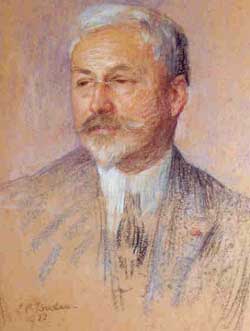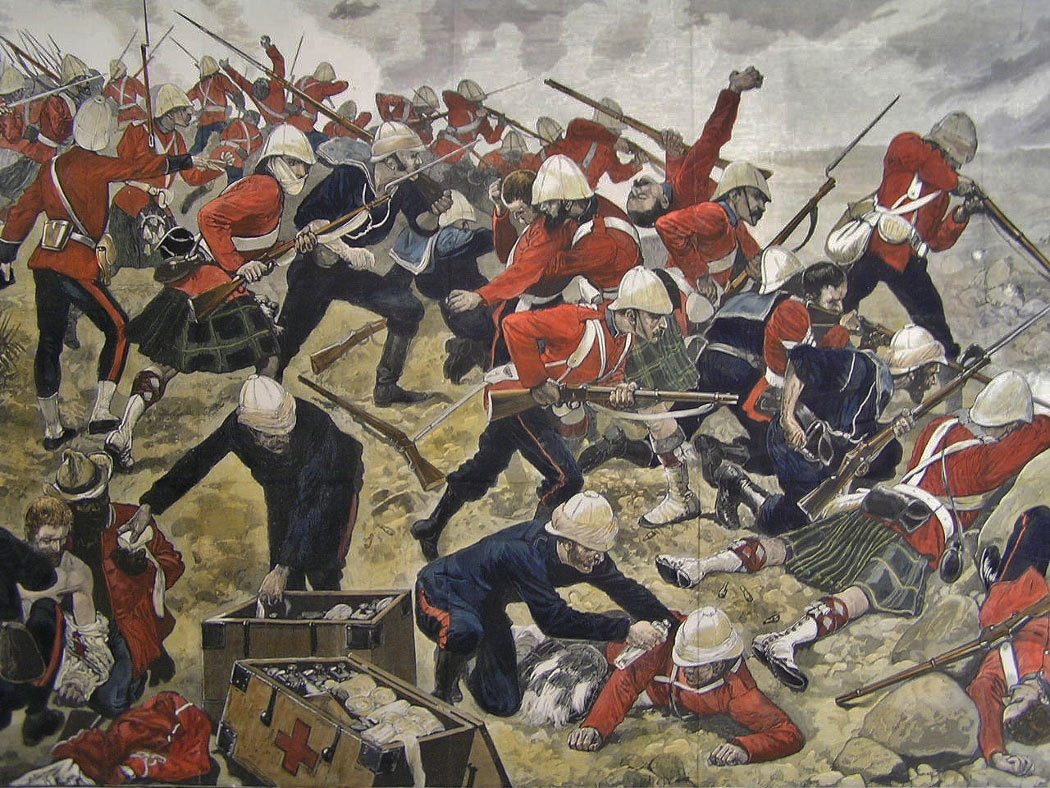|
├ēdouard Guillaume
├ēdouard Guillaume (1881ŌĆō1959) was a Swiss physicist and patent examiner, notorious for his published papers attacking Albert Einstein's theory of special relativity. He is also noteworthy for his work on mathematical economics. ├ēdouard Guillaume was the younger cousin of Charles ├ēdouard Guillaume, who won the Nobel prize in physics in 1920. Both of the Guillaume cousins received doctorates in physics from the Zurich Polytechnique (ETH Zurich). ├ēdouard Guillaume (the younger cousin) worked at the Swiss patent office where Einstein worked from 1902 to 1909. Beginning in 1913 Guillaume began publishing in the ''Archives des Sciences Physiques et Naturelles'' papers arguing for a Lorentzian electrodynamics with a universal time. He claimed that Einstein's theory mistakes changes in the units of measurement for physical changes and that time can be regarded as absolute. Guillaume opposed the theory of relativity, though most of his objections were related to special relativity. Be ... [...More Info...] [...Related Items...] OR: [Wikipedia] [Google] [Baidu] |
Albert Einstein
Albert Einstein (14 March 187918 April 1955) was a German-born theoretical physicist who is best known for developing the theory of relativity. Einstein also made important contributions to quantum mechanics. His massŌĆōenergy equivalence formula , which arises from special relativity, has been called "the world's most famous equation". He received the 1921 Nobel Prize in Physics for . Born in the German Empire, Einstein moved to Switzerland in 1895, forsaking his German citizenship (as a subject of the Kingdom of W├╝rttemberg) the following year. In 1897, at the age of seventeen, he enrolled in the mathematics and physics teaching diploma program at the Swiss ETH Zurich, federal polytechnic school in Zurich, graduating in 1900. He acquired Swiss citizenship a year later, which he kept for the rest of his life, and afterwards secured a permanent position at the Swiss Patent Office in Bern. In 1905, he submitted a successful PhD dissertation to the University of Zurich. In 19 ... [...More Info...] [...Related Items...] OR: [Wikipedia] [Google] [Baidu] |
Theory Of Special Relativity
In physics, the special theory of relativity, or special relativity for short, is a scientific theory of the relationship between space and time. In Albert Einstein's 1905 paper, "On the Electrodynamics of Moving Bodies", the theory is presented as being based on just two postulates: # The laws of physics are invariant (identical) in all inertial frames of reference (that is, frames of reference with no acceleration). This is known as the principle of relativity. # The speed of light in vacuum is the same for all observers, regardless of the motion of light source or observer. This is known as the principle of light constancy, or the principle of light speed invariance. The first postulate was first formulated by Galileo Galilei (see ''Galilean invariance''). Background Special relativity builds upon important physics ideas. The non-technical ideas include: * speed or velocity, how the relative distance between an object and a reference point changes with time. * speed of ... [...More Info...] [...Related Items...] OR: [Wikipedia] [Google] [Baidu] |
Charles ├ēdouard Guillaume
Charles ├ēdouard Guillaume (; 15 February 1861 ŌĆō 13 June 1938) was a Swiss physicist who received the Nobel Prize in Physics in 1920 "for the service he had rendered to precision measurements in physics by his discovery of anomalies in nickel steel alloys". In 1919, he gave the fifth Guthrie Lecture at the Institute of Physics in London with the title "The Anomaly of the Nickel-Steels". Personal life Charles-Edouard Guillaume was born in Fleurier, Switzerland, on 15 February 1861. Guillaume received his early education in Neuch├ótel, and obtained a doctoral degree in Physics at ETH Zurich in 1883. Guillaume was married in 1888 to A. M. Taufflieb, with whom he had three children. He died on 13 June 1938 at S├©vres, aged 77. Scientific career Guillaume was head of the International Bureau of Weights and Measures.Gould, p.201. He also worked with Kristian Birkeland, serving at the Observatoire de Paris – Section de Meudon. He conducted several experiments with ... [...More Info...] [...Related Items...] OR: [Wikipedia] [Google] [Baidu] |
ETH Zurich
ETH Zurich (; ) is a public university in Zurich, Switzerland. Founded in 1854 with the stated mission to educate engineers and scientists, the university focuses primarily on science, technology, engineering, and mathematics. ETH Zurich ranks among Europe's best universities. Like its sister institution ├ēcole Polytechnique F├®d├®rale de Lausanne, EPFL, ETH Zurich is part of the ETH Domain, Swiss Federal Institutes of Technology Domain, a consortium of universities and research institutes under the Swiss Federal Department of Economic Affairs, Education and Research. , ETH Zurich enrolled 25,380 students from over 120 countries, of which 4,425 were pursuing doctoral degrees. Students, faculty, and researchers affiliated with ETH Zurich include 22 Nobel Prize, Nobel laureates, two Fields Medalists, three Pritzker Architecture Prize, Pritzker Prize winners, and one Turing Award, Turing Award recipient, including Albert Einstein and John von Neumann. It is a founding member o ... [...More Info...] [...Related Items...] OR: [Wikipedia] [Google] [Baidu] |
University Of Neuchâtel
The University of Neuchâtel (UniNE) is a French-speaking public research university in Neuchâtel, Switzerland. The university has four faculties (schools) and more than a dozen institutes, including arts and human sciences, natural sciences, law and economics. The Faculty of Arts and Human Sciences, with 2,000 students, is the largest school of those that comprise the University of Neuchâtel. The university has an annual budget of CHF 144 million and an annual research fund of CHF 40 million. Approximately 4,000 students, including 600 PhD students attend the university, and more than 600 diplomas, licences, doctorates and certificates are awarded each year. The university has more than 1,100 employees. History The University of Neuchâtel superseded the Academy, which was created in 1838 by King Frederick William IV of Prussia, Prince of Neuchâtel. It awarded licentiate academic degrees in arts and sciences. In 1848, the Grand Council decreed the closing of the academy ... [...More Info...] [...Related Items...] OR: [Wikipedia] [Google] [Baidu] |
International Congress Of Mathematicians
The International Congress of Mathematicians (ICM) is the largest conference for the topic of mathematics. It meets once every four years, hosted by the International Mathematical Union (IMU). The Fields Medals, the IMU Abacus Medal (known before 2022 as the Nevanlinna Prize), the Carl Friedrich Gauss Prize, Gauss Prize, and the Chern Medal are awarded during the congress's opening ceremony. Each congress is memorialized by a printed set of Proceedings recording academic papers based on invited talks intended to be relevant to current topics of general interest. Being List of International Congresses of Mathematicians Plenary and Invited Speakers, invited to talk at the ICM has been called "the equivalent ... of an induction to a hall of fame". History German mathematicians Felix Klein and Georg Cantor are credited with putting forward the idea of an international congress of mathematicians in the 1890s.A. John Coleman"Mathematics without borders": a book review. ''CMS Notes'' ... [...More Info...] [...Related Items...] OR: [Wikipedia] [Google] [Baidu] |
1881 Births
Events January * January 1– 24 – Siege of Geok Tepe: Russian troops under General Mikhail Skobelev defeat the Turkomans. * January 13 – War of the Pacific – Battle of San Juan and Chorrillos: The Chilean army defeats Peruvian forces. * January 15 – War of the Pacific – Battle of Miraflores: The Chileans take Lima, capital of Peru, after defeating its second line of defense in Miraflores. * January 24 – William Edward Forster, chief secretary for Ireland, introduces his Coercion Bill, which temporarily suspends habeas corpus so that those people suspected of committing an offence can be detained without trial; it goes through a long debate before it is accepted February 2. Note that Coercion bills had been passed almost annually in the 19th century, with a total of 105 such bills passed from 1801 to 1921. * January 25 – Thomas Edison and Alexander Graham Bell form the Oriental Telephone Company. February * Febru ... [...More Info...] [...Related Items...] OR: [Wikipedia] [Google] [Baidu] |
1959 Deaths
Events January * January 1 ŌĆō Cuba: Fulgencio Batista flees Havana when the forces of Fidel Castro advance. * January 2 ŌĆō Soviet lunar probe Luna 1 is the first human-made object to attain escape velocity from Earth. It reaches the vicinity of Earth's Moon, where it was intended to crash-land, but instead becomes the first spacecraft to go into heliocentric orbit. * January 3 ** Alaska is admitted as the 49th U.S. state. ** The southernmost island of the Maldives archipelago, Addu Atoll, declares its independence from the Kingdom of the Maldives, initiating the United Suvadive Republic. * January 4 ** In Cuba, rebel troops led by Che Guevara and Camilo Cienfuegos enter the city of Havana. ** L├®opoldville riots: At least 49 people are killed during clashes between the police and participants of a meeting of the ABAKO Party in Kinshasa, L├®opoldville in the Belgian Congo. * January 6 ŌĆō The International Maritime Organization is inaugurated. * January 7 ŌĆō The United ... [...More Info...] [...Related Items...] OR: [Wikipedia] [Google] [Baidu] |
ETH Zurich Alumni
Eth ( , uppercase: Ō¤©├ÉŌ¤®, lowercase: Ō¤©├░Ō¤®; also spelled edh or e├░), known as in Old English, is a letter used in Old English, Middle English, Icelandic, Faroese (in which it is called ), and Elfdalian. It was also used in Scandinavia during the Middle Ages, but was subsequently replaced with , and later . It is often transliterated as . The lowercase version has been adopted to represent a voiced dental fricative ( IPA: ) in the International Phonetic Alphabet. Faroese In Faroese, is not assigned to any particular phoneme and appears mostly for etymological reasons, but it indicates most glides. When appears before , it is in a few words pronounced . In the Faroese alphabet, follows . Khmer is sometimes used in Khmer romanization to represent '. Icelandic In Icelandic, , called "e├░", represents an alveolar non-sibilant fricative, voiced intervocalically and word-finally, and voiceless otherwise, which form one phoneme, . Generally, is ... [...More Info...] [...Related Items...] OR: [Wikipedia] [Google] [Baidu] |
Patent Examiners
A patent examiner (or, historically, a patent clerk) is an employee, usually a civil servant with a scientific or engineering background, working at a patent office. Duties Due to a long-standing and incessantly growing backlog of unexamined patent applications, examiners have a very limited amount of time to determine patentability of disclosed inventions. Ill-defined "tenure rules", as well as pressure to work overtime to meet the "production quotas", result in very high (over 50% within 4 years after hiring, mostly involuntary) attrition rates among patent examiners, especially at the USPTO. The attrition (mostly involuntary) of patent examiners is so severe that "in some years the USPTO loses more examiners than it hires". Some patent applications are easy for an examiner to assess, but others require considerably more time. This has given rise to controversy: on April 13, 2007, a "Coalition of Patent Examiner Representatives" expressed concern that Offices European Pat ... [...More Info...] [...Related Items...] OR: [Wikipedia] [Google] [Baidu] |







